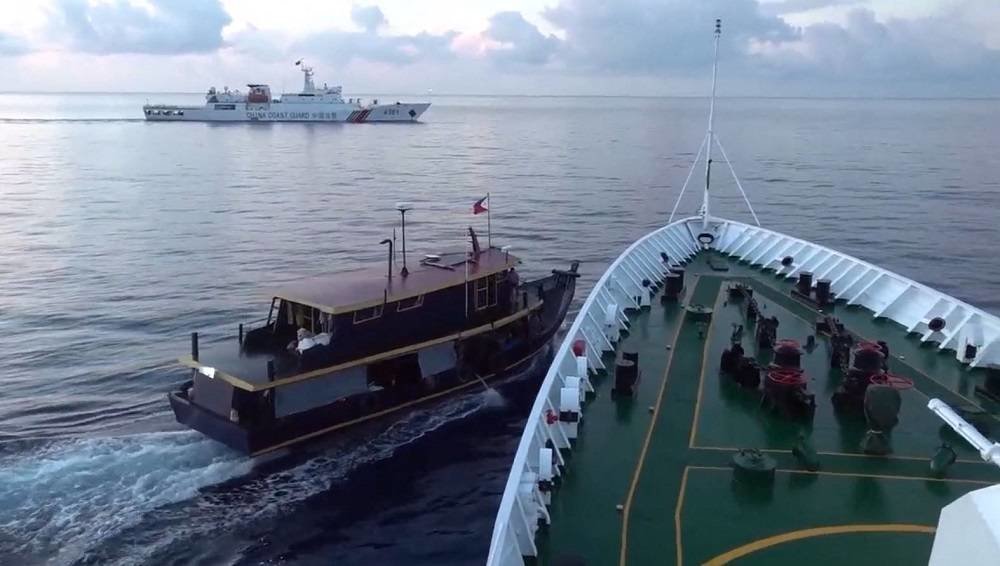In a troubling escalation of tensions between the United States and China, the
U.S. Department of Defence (DoD) has accused the Chinese military of conducting a “centralized and concerted campaign” to threaten the safety of
U.S. forces operating in the air and sea. This accusation comes in the wake of the release of declassified images and videos showcasing numerous instances of what the U.S. calls China’s “coercive and risky operational behavior.” These incidents have occurred in the East China Sea and South China Sea over the past two years, raising concerns about the safety of U.S. military personnel. Assistant Secretary of Defence for Indo-Pacific Security Affairs, Ely Ratner, revealed that these confrontations have increased significantly, with over 180 incidents since the fall of 2021 and nearly 300 when accounting for interactions with other states. This article delves into the details of these incidents, the U.S. response, and the broader implications of this intensifying conflict.
The declassified materials released by the DoD reveal a pattern of aggressive behaviour exhibited by the Chinese military aircraft. One such incident, dating back to May 24, 2022, involved a People’s Liberation Army (PLA) fighter jet, possibly a Chengdu J-10, approaching a U.S. aircraft from below, flying just 3 meters beneath it. This reckless manevour caused the U.S. aircraft to lose visual contact with the PLA fighter. In another instance on June 8, 2022, four PLA airplanes engaged in a five-hour intercept operation, with one aircraft approaching as close as 12 meters, even taking photographs of the U.S. plane. These incidents have not only involved dangerously close approaches but also the release of objects and projectiles, including flares. On June 23, 2022, a PLA Su-30 jet repeatedly flew above and below a U.S. aircraft while flashing its weapons. Such provocative actions have raised concerns about the potential for accidents that could result in loss of life.
The Commander of U.S. Indo-Pacific Command, Navy Adm. John Aquilino, expressed deep concerns about the increased frequency of these
confrontations. He highlighted that U.S. and Chinese planes have been flying in closer proximity since the 2001 incident when a U.S. Navy EP-3E Aries II aircraft collided midair with a Chinese F-8 fighter jet over the South China Sea. Adm. Aquilino emphasized that when such encounters become “unsafe and unprofessional,” lives are put at risk. The risk of accidents in close intercepts and activities near U.S. aircraft has seen a worrying uptick.
Assistant Secretary of Defense Ely Ratner underlined that these aggressive Chinese intercepts are not limited to the skies but extend across various domains and geographies. Chinese military vessels have reportedly harassed
U.S. and allied warships in the East China Sea and the South China Sea, and similar behavior has been observed on land in interactions with U.S. partners, such as India. Ratner emphasized that these incidents should be seen as part of a broader pattern of behavior by the Chinese military.
While the United States has raised serious concerns about China’s military activities, China has not yet officially responded to the newly released images and videos. Nevertheless, Beijing has consistently maintained that its military follows international practices in most areas and cases.
Hu Bo, a well-known Chinese analyst, argues that the interpretation of these incidents varies based on the legal and political context in different regions. He implies that the People’s Liberation Army merely reacts to what it perceives as
U.S. intrusions. This illustrates the complexities and competing narratives surrounding these encounters.
The ongoing and escalating incidents between the United States and China in the air and at sea are cause for serious concern. The U.S. Department of Defense’s accusation of a coordinated campaign by the Chinese military underscores the need for diplomatic efforts to address and de-escalate the situation. These confrontations not only jeopardize the safety of military personnel but also raise the risk of unintended accidents that could further strain U.S.-China relations. As the world watches these developments, it becomes increasingly important for both nations to find common ground and engage in open dialogue to prevent further escalation and maintain stability in the Indo-Pacific region. Furthermore, it is crucial for the United States and China to explore mechanisms for crisis management and confidence-building
measures, as a single miscalculation in such tense circumstances can have catastrophic consequences. The international community, including neighboring nations in the Indo-Pacific region, should play a role in facilitating constructive dialogue and promoting peace.

Leave a Reply